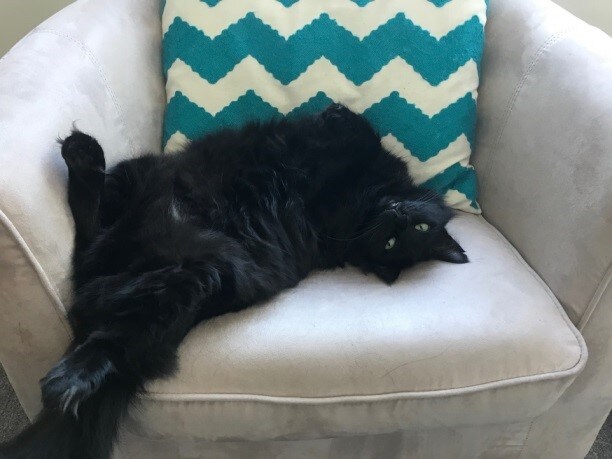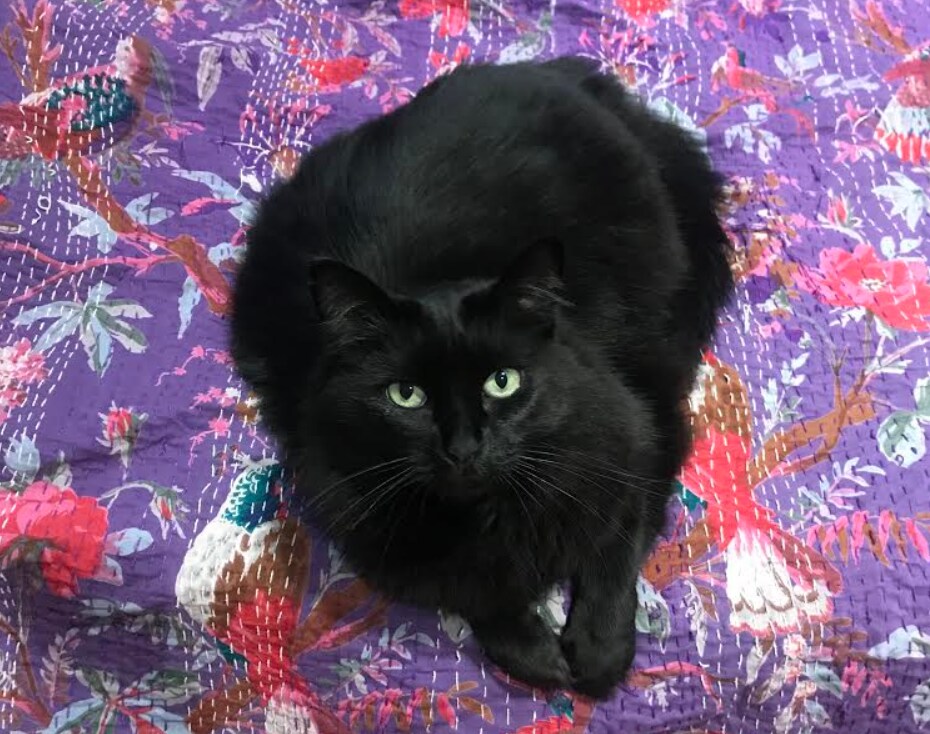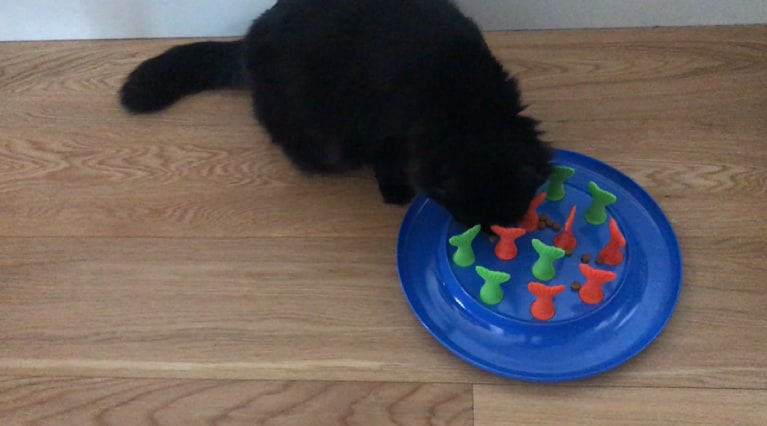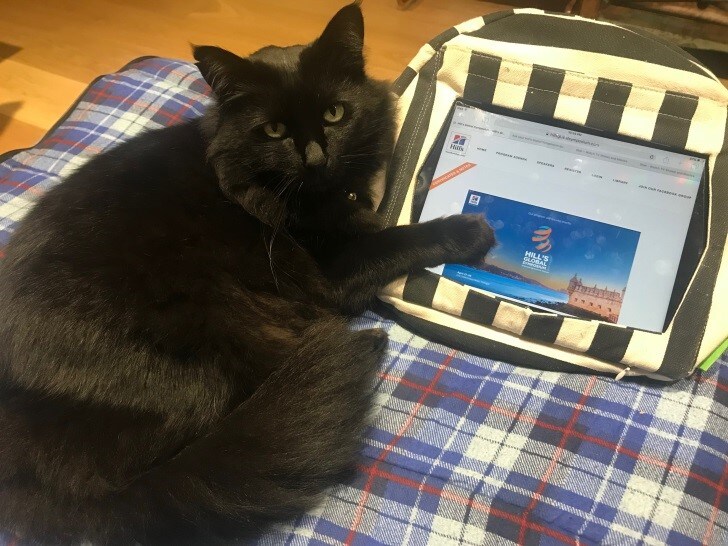You may remember Minnie, an obese 10 year old Domestic Long Haired cat, first introduced to you earlier in the year in our blog ‘You should be doing feeding calculations on pets’. Well I have an embarrassing admission to make. Minnie is my own cat. Yes, I am a veterinarian and I work for a pet nutrition company, and isn’t it ridiculous and absurd that my cat was allowed to become obese! I travel a lot for work and it was easier to blame everyone else looking after Minnie for her weight gain. The reality was that I was also to blame as I was the one trying to earn her affection (and overcome her disdainful treatment of me when I picked her up from the cattery) by feeding her. I would get pleasure from seeing my cat eat her favourite Hill’s kibble and was relieved to be in the good books with her once more.


It was after she developed issues with her biceps tendon, directly related to her weight, that it finally sunk in… What I was doing was really mean! She was grade 5/6 lame and was on daily anti-inflammatories. Minnie had always been on Hill’s weight loss foods (just a very large amount), but I decided it was time to get real about it and practice what I preach. Plus I was fed up with getting ridiculed by my vet and nurse colleagues!
The main reason I am telling my somewhat embarrassing story is I wanted to share some of the tips from my own experience that REALLY WORKED for my cat (and her owner) to ensure the diet was a success.
- I tackled the variety issue: We all know pets don’t need variety. My cat will literally eat ANYTHING, but I like to be able to offer it. Yes… eyeroll… I am one of those owners. So I eventually decided that, for ME to be successful with the diet, I would need to pick an option that had the most variety. I eventually decided on Science Diet™ Perfect Weight™, which uses similar technology to Hill’s™ Prescription Diet™ Metabolic™, because it has kibble, stew and pouch options. I could also use the Metabolic™ treats with it.
- I cut the Hill’s cup to size: It’s important to use the right cup, but Minnie was only getting a ¼ cup of kibble each day, so I cut it down to size, removing the temptation to add a bit more.
- I worked out a routine that suited my feeding regime: I often work from home, which means Minnie is constantly around me and she always wants what I am eating. I decided to feed her four meals a day to align with my meal times, so I didn’t feel guilty. I spread the ¼ cup of biscuits out over breakfast, lunch and supper. For dinner she had either a Perfect Weight stew or pouch.
- I fed wet food: If Minnie was particularly hungry, I offered her Perfect Weight™ wet food. Wet food can really help to fill pets up so they don’t pester you.
- I slowed down her eating: Minnie is the Labrador of the cat world and often scoffs her food. The best purchase I made was an interactive cat feeder. Not only does this slow the eating process considerably, it also provides environmental enrichment. Biscuits expand when they become moist in the stomach, and slowing the rate the cat eats can help them realise they are actually full and avoid regurgitated biscuits! That’s what I call WINNING!
- I provided strict feeding instructions for when I was away: When I travelled interstate I provided the cup, all her food and strict feeding instructions to her interim carers. If there were multiple people that could be feeding Minnie, I measured the amount of food to be fed daily into labelled zip lock bags to avoid accidental overfeeding. I also insisted that they weigh her every few days to ensure they kept on top of the weight. I told them I would check when I got back!
- I put her begging behaviour into perspective: When Minnie meowed I would automatically presume she was hungry. Often, she just wanted my attention and affection. I knew she wasn’t really hungry if I could distract her with a toy. The Da Bird™ toy was her favourite and also helped get her exercising. So next time a cat begs, try distracting it with a brush or toy. If the distraction works then the cat isn’t really that hungry!

How did Minnie do?
At the beginning of her weight loss program, Minnie weighed 6.4 kg. She now weighs 5.47 kg, which is 930 g of weight lost! She still has another 500 g to lose but is well on her way to attaining her summer body. I am pleased to report she is no longer lame on her right foreleg and no longer requires NSAIDS. She is much more playful and has started jumping on the bench and attacking my feet at night!


Blog by: Dr Annabel Robertson, Hill’s Professional Consulting Veterinarian, BVSc (hons) MANZCVS (SAM) MBA.
Annabel graduated from the University of Melbourne with honours in 2008. Since then she has worked as a small animal veterinarian in private practice in Australia and the UK. She also completed an internship in small animal medicine during this time and sat her membership in small animal internal medicine in 2012, and finished her MBA in 2015. Annabel joined the Hill’s team in 2015 as a technical services vet in Melbourne.